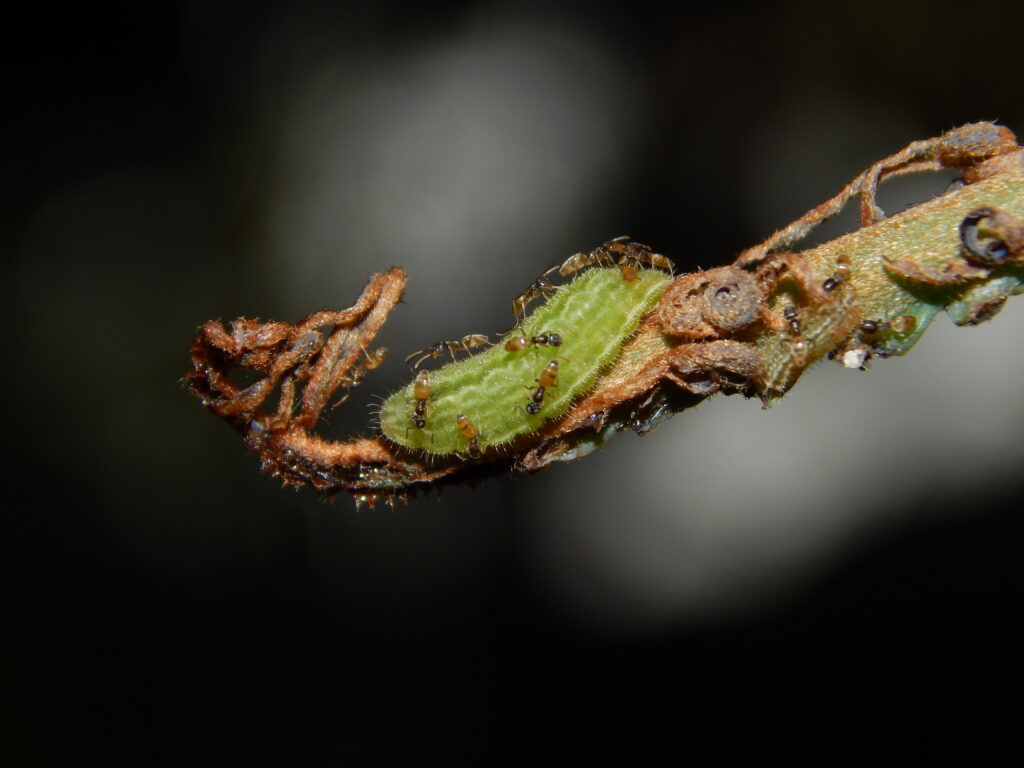In the dense understory of tropical forests, where shadows dance between leaves and silence is broken only by the rustle of wind, an extraordinary symphony plays out daily. It’s not the chirping of birds or the buzz of bees that commands attention, but rather the gentle tapping of tiny caterpillars against plant stems. These remarkable creatures have evolved one of nature’s most ingenious communication systems, creating vibrations that serve as alarm bells for their six-legged bodyguards. The relationship between certain caterpillars and their ant protectors represents one of the most sophisticated examples of mutualistic communication in the animal kingdom, where sound becomes the currency of survival.
The Discovery That Changed Everything
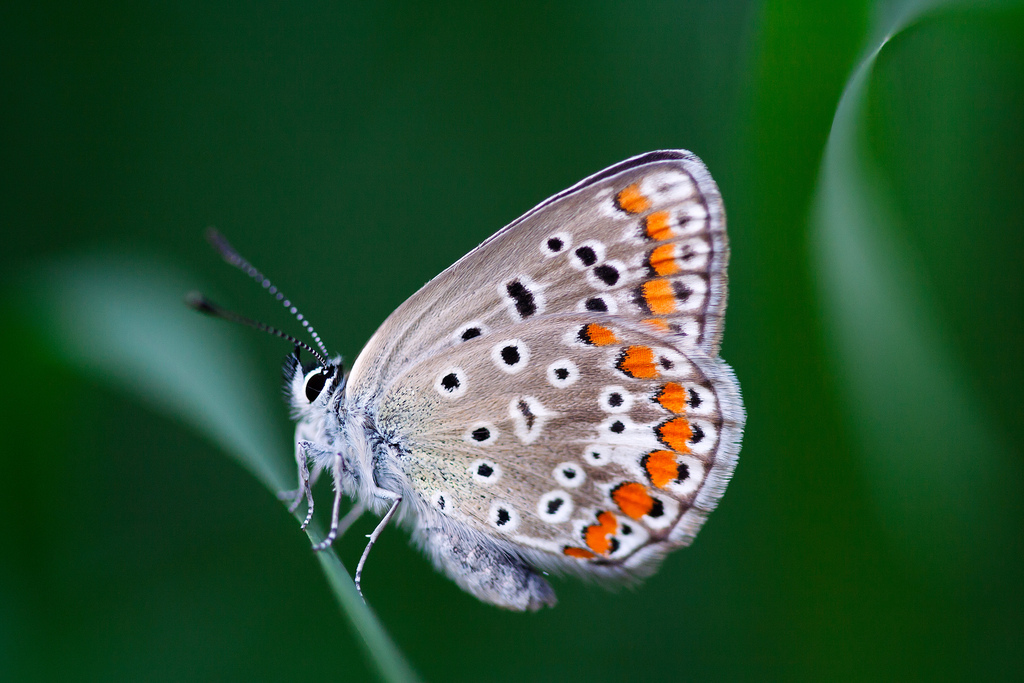
Scientists first stumbled upon this remarkable phenomenon in the 1980s while studying lycaenid butterflies in Australian eucalyptus forests. What began as routine observations of caterpillar behavior quickly transformed into groundbreaking research when researchers noticed peculiar vibrations emanating from the larvae. These weren’t random movements or feeding activities, but deliberate, rhythmic communications that seemed to trigger immediate responses from nearby ants.
The breakthrough came when researchers realized these caterpillars were essentially playing their plant hosts like drums, creating species-specific vibrations that traveled through stems and branches. Each tap carried meaning, each rhythm conveyed urgency, and each pattern served as a sophisticated message system that had evolved over millions of years. This discovery opened an entirely new field of study in insect communication, revealing that the natural world was far more acoustically complex than previously imagined.
The Mechanics of Miniature Music
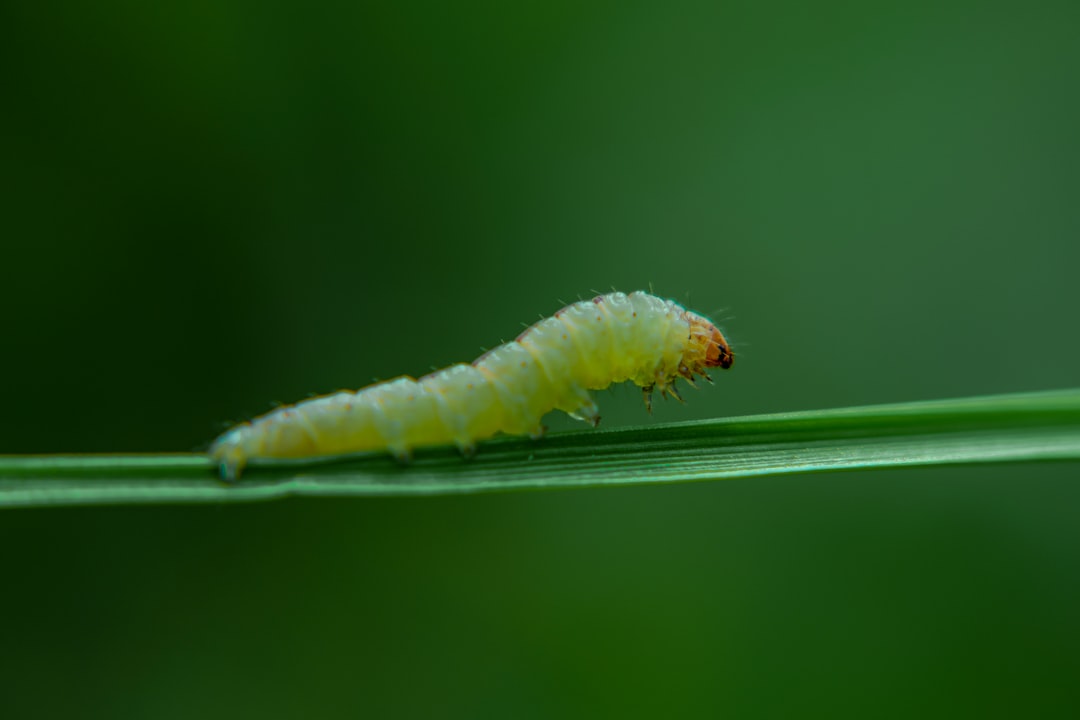
The caterpillar’s sound-making apparatus is a marvel of evolutionary engineering, consisting of specialized structures that would make any percussionist envious. These larvae possess modified body segments equipped with hardened plates or tubercles that function as tiny mallets. When danger approaches, the caterpillar rapidly contracts its muscles, causing these structures to strike against the plant surface with remarkable precision and force.
The vibrations travel through the plant’s vascular system like sound waves through a speaker, creating a communication network that extends far beyond the caterpillar’s immediate vicinity. Different species have developed distinct rhythmic patterns, with some producing rapid staccato beats while others create longer, more sustained pulses. The frequency and intensity of these vibrations can vary dramatically based on the perceived threat level, creating a sophisticated alarm system that rivals any human-made warning device.
Meet the Ant Cavalry

The responding ants are far from passive participants in this relationship; they’re highly trained soldiers ready to mobilize at a moment’s notice. These formidable insects, often belonging to species like Iridomyrmex or Rhytidoponera, maintain constant patrols around their caterpillar charges, but the vibrations serve as an emergency beacon that brings immediate reinforcements. When the alarm sounds, worker ants drop everything and rush toward the source of the disturbance with military-like precision.
The ants’ response is both swift and brutal, with workers arriving within seconds to confront any perceived threat. Their arsenal includes powerful mandibles capable of delivering painful bites, venomous stings that can incapacitate much larger predators, and chemical weapons in the form of formic acid sprays. This rapid response system has proven so effective that many caterpillar species have become entirely dependent on their ant protectors for survival, unable to complete their life cycles without this crucial partnership.
The Sweet Deal Behind the Defense
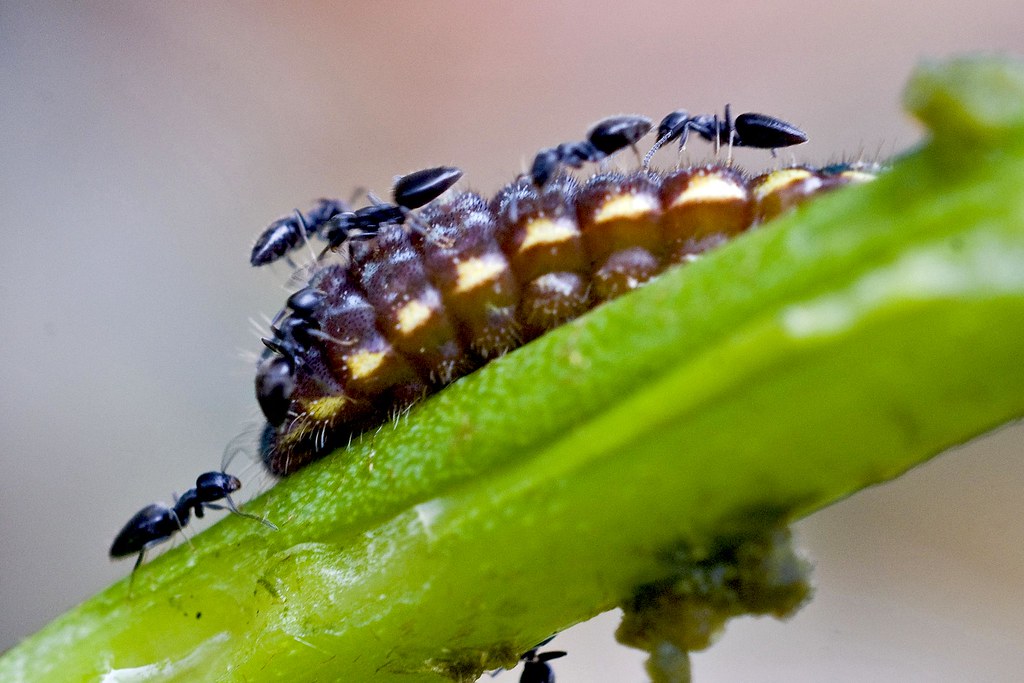
This isn’t charity work for the ants; it’s a carefully negotiated business arrangement where payment comes in the form of liquid gold. The caterpillars produce a sugary secretion from specialized glands, creating a high-energy food source that ants crave more than any natural nectar. This honeydew is rich in amino acids and carbohydrates, providing the perfect fuel for the ants’ energy-intensive lifestyle of constant patrolling and defending.
The quality and quantity of these secretions directly influence the level of protection the caterpillars receive, creating a fascinating economy based on sugar currency. Caterpillars that produce more nutritious or abundant secretions enjoy better protection, while those that fail to meet their contractual obligations may find themselves abandoned to face predators alone. This system has driven the evolution of increasingly sophisticated chemical factories within the caterpillars’ bodies, each species developing unique recipes to attract and retain their ant partners.
Decoding the Language of Vibration
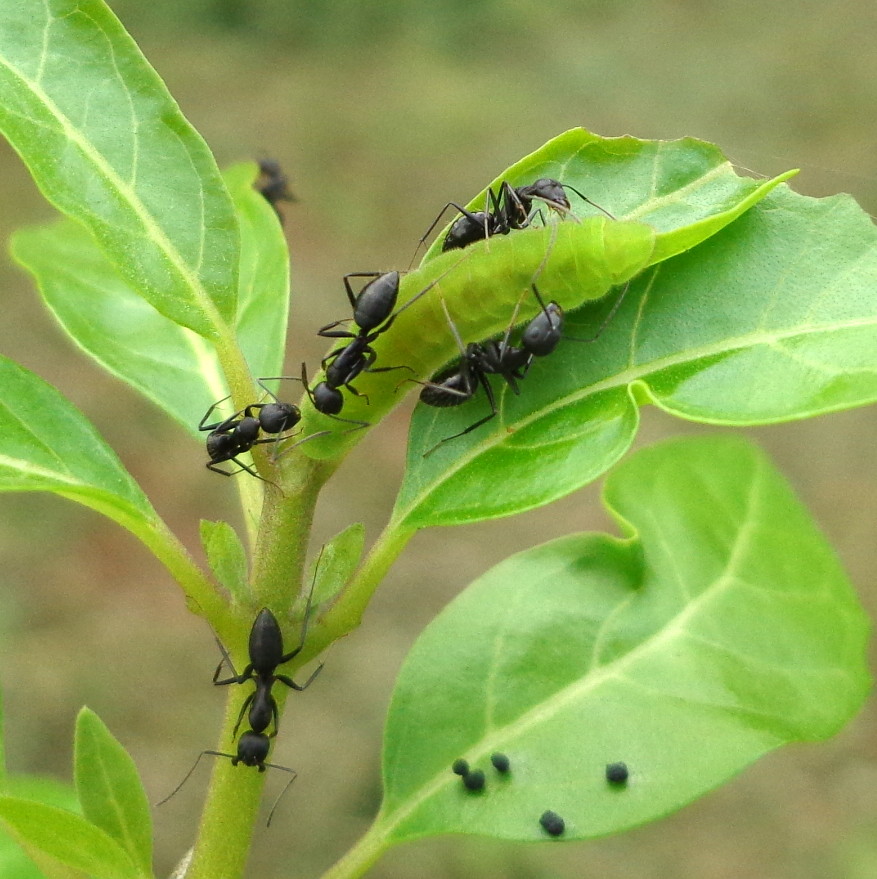
The complexity of caterpillar communication rivals that of many vertebrate species, with researchers identifying multiple distinct signal types that convey different types of information. Short, rapid bursts typically indicate immediate danger from predators like spiders or parasitic wasps, while longer, more sustained vibrations often signal distress from environmental factors such as extreme temperatures or physical damage. Some species have even developed recruitment calls that specifically request additional ant guards during particularly vulnerable periods.
The precision of this communication system is remarkable, with caterpillars able to modulate their signals based on the specific type of threat they’re facing. A bird approaching from above triggers a different alarm pattern than a spider creeping along the stem, allowing the ant defenders to prepare appropriate countermeasures. This level of sophistication suggests that caterpillars possess far more complex cognitive abilities than previously recognized, challenging our understanding of insect intelligence and communication.
The Evolutionary Arms Race
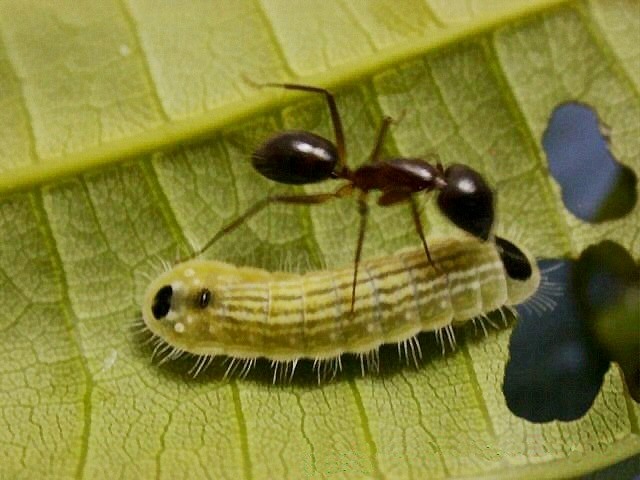
The development of this communication system represents millions of years of evolutionary pressure, with both caterpillars and ants continuously refining their partnership to stay ahead of increasingly sophisticated predators. Early caterpillars likely began with simple chemical signals, but as predators developed resistance to these defenses, the larvae evolved increasingly complex warning systems. The addition of vibrational communication provided a quantum leap in defensive capabilities, allowing for rapid, long-distance alerts that chemical signals alone couldn’t achieve.
This evolutionary arms race has produced some of the most remarkable examples of co-evolution in nature, with some caterpillar species developing backup communication systems in case their primary ant partners are unavailable. The pressure to maintain these relationships has been so intense that many caterpillars have lost their ability to survive independently, becoming completely dependent on their ant protectors throughout their larval development.
When Communication Breaks Down
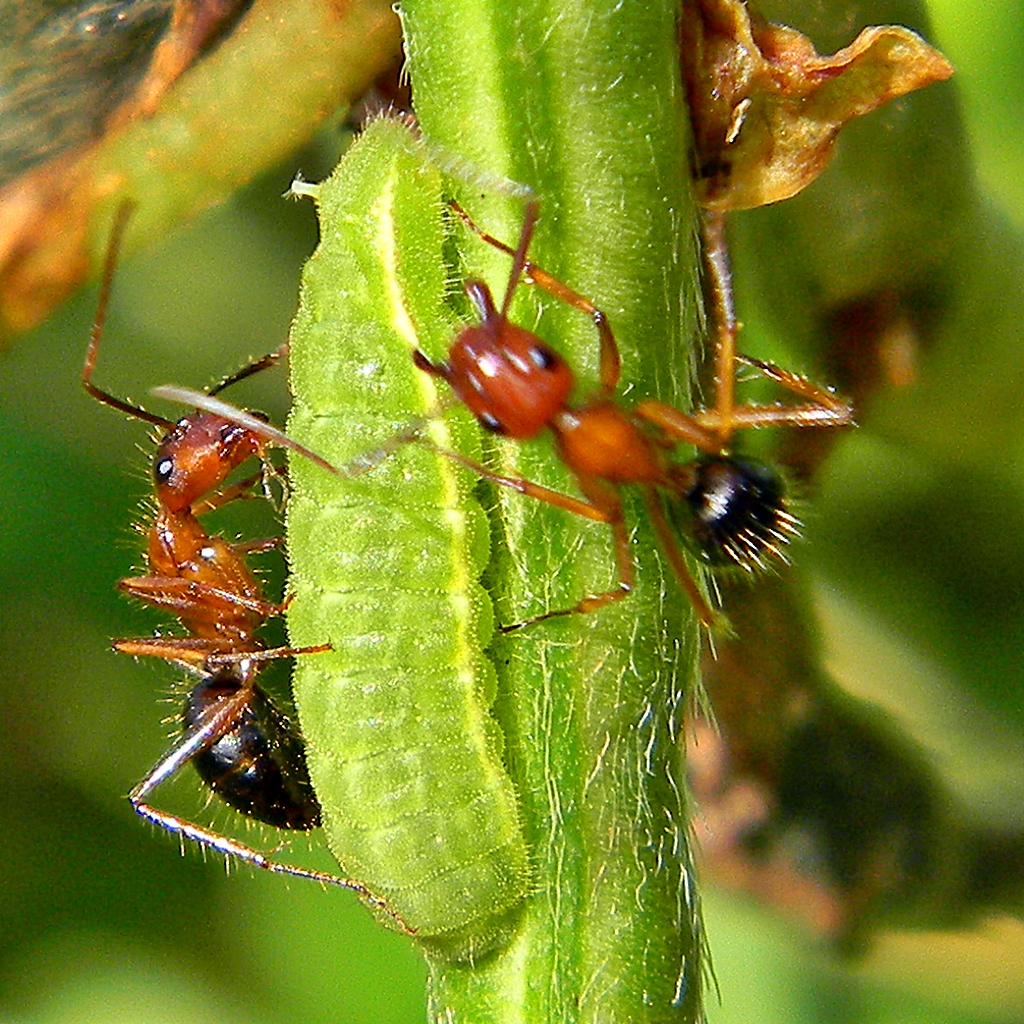
Despite the sophistication of this system, communication failures can and do occur, often with devastating consequences for the caterpillars involved. Environmental factors such as heavy rain, strong winds, or plant damage can interfere with vibration transmission, leaving caterpillars vulnerable to attack during critical moments. Additionally, some predators have learned to exploit this communication system, using the vibrations to locate caterpillars or even mimicking the signals to confuse ant defenders.
The breakdown of these partnerships often occurs when environmental changes disrupt the delicate balance of the relationship, such as when invasive ant species displace native defenders or when habitat destruction eliminates the specific plant species that facilitate communication. These disruptions can have cascading effects throughout the ecosystem, as the loss of protected caterpillars impacts the butterfly populations that depend on them for reproduction and genetic diversity.
The Diversity of Drumming Species

The world of vibrational communication extends far beyond a single species, with researchers discovering similar behaviors in caterpillars across multiple continents and ecological niches. Australian hairstreak butterflies represent perhaps the most well-studied example, but similar relationships have been documented in South American rainforests, African savannas, and even temperate forests of North America. Each region has produced its own unique variations on the theme, with local caterpillar species developing distinct communication styles adapted to their specific ant partners and environmental conditions.
Some of the most remarkable examples come from the Neotropical region, where caterpillars have evolved to work with multiple ant species simultaneously, creating complex polyspecies alliances that provide unprecedented levels of protection. These caterpillars have developed sophisticated repertoires of different vibrational patterns, each specifically tuned to attract and communicate with different ant species based on the specific threats they face.
The Role of Plant Partners
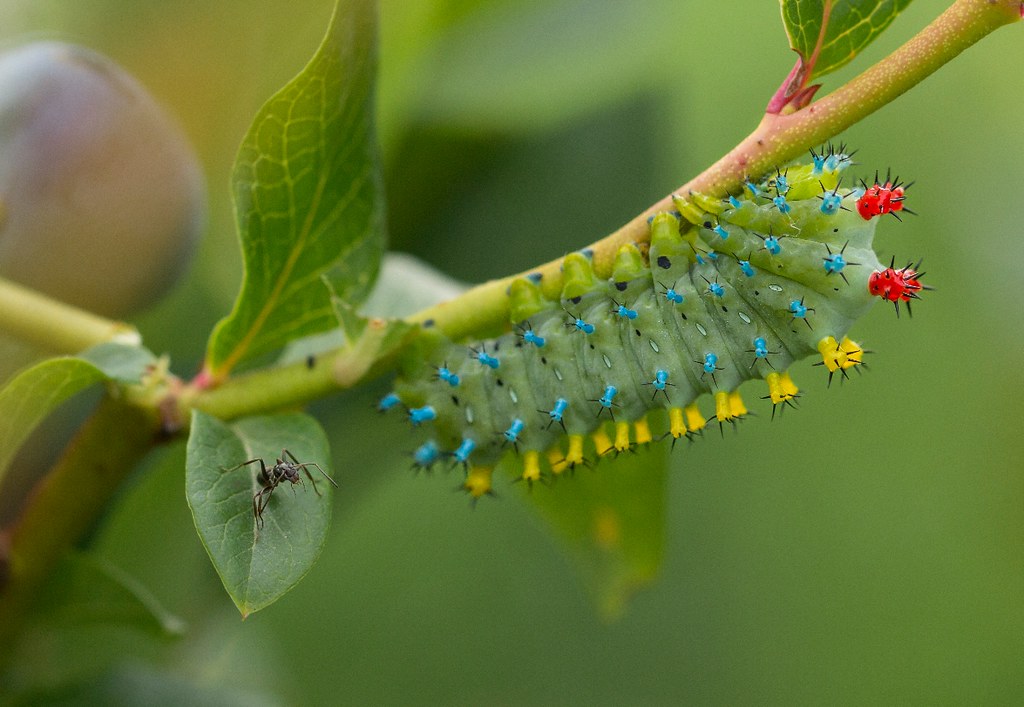
The plants that serve as communication conduits in these relationships are far from passive participants; they’re active partners that have evolved specific characteristics to enhance signal transmission. Many of these plants have developed hollow stems or specialized tissues that act as acoustic chambers, amplifying and directing the caterpillars’ vibrations to maximize their effectiveness. The plant benefits from this arrangement as well, as the constant presence of aggressive ants provides protection from herbivorous insects that might otherwise cause significant damage.
Some plants have evolved to be so perfectly suited for this communication system that they’ve become essential components of the caterpillar-ant partnership, with neither the larvae nor their defenders able to function effectively on other plant species. This three-way mutualism represents one of the most complex cooperative relationships in nature, where the success of each partner depends entirely on the continued participation of the others.
Predators and the Art of Deception
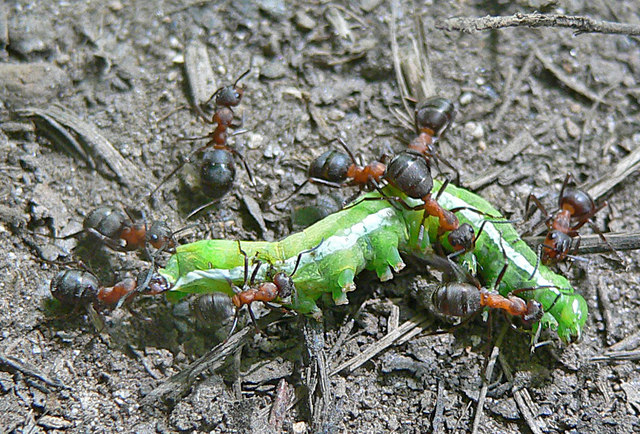
The sophistication of caterpillar-ant communication has not gone unnoticed by predators, many of whom have developed equally impressive countermeasures to overcome these defenses. Some spiders have learned to time their attacks during periods when ant patrols are at their weakest, while others have developed specialized techniques for approaching caterpillars without triggering vibrational alarms. Perhaps most remarkably, certain predatory insects have evolved the ability to mimic caterpillar alarm calls, using false signals to confuse ant defenders and create opportunities for attack.
The ongoing battle between predators and prey has driven the evolution of increasingly complex communication protocols, with some caterpillar species developing multiple layers of redundancy in their warning systems. These evolutionary adaptations demonstrate the intense selective pressure that shapes these relationships, as even small improvements in communication efficiency can mean the difference between survival and extinction for entire populations.
The Science of Sound in Miniature
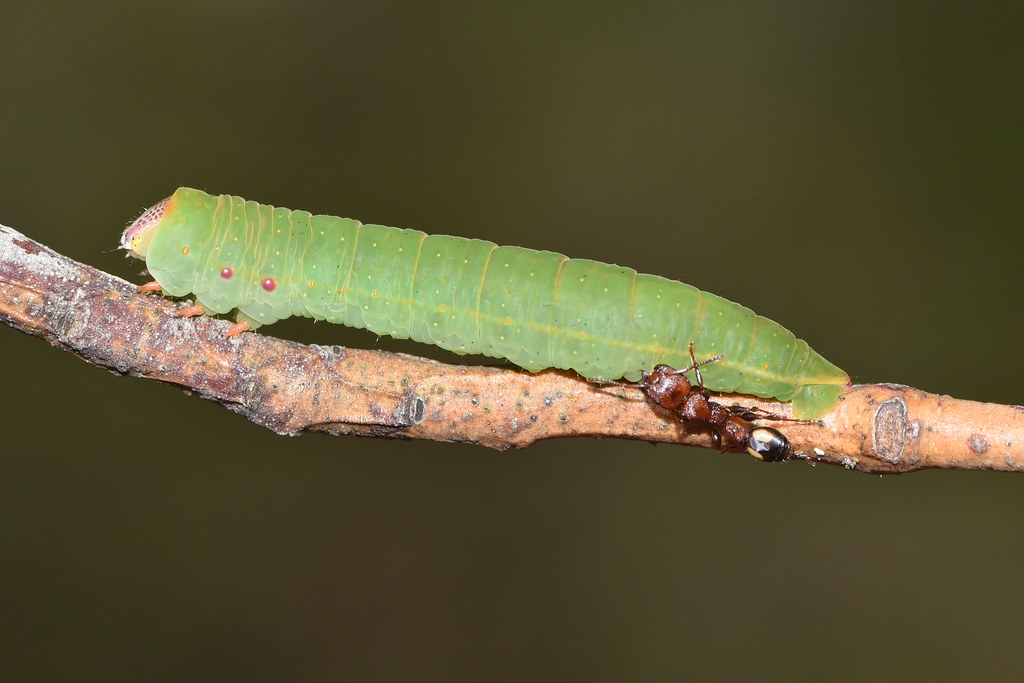
Understanding how these tiny creatures generate and transmit vibrations has required cutting-edge technology and innovative research techniques that push the boundaries of biological science. Researchers use laser vibrometry and high-speed cameras to capture the minute details of caterpillar drumming behavior, while specialized microphones and accelerometers record the vibrations as they travel through plant tissues. These tools have revealed that caterpillar communications operate on frequencies and intensities that were previously undetectable to human researchers.
The physics of vibrational transmission through plant materials presents unique challenges that caterpillars have overcome through millions of years of evolutionary refinement. Different plant species conduct vibrations at different frequencies and intensities, requiring caterpillars to adjust their communication strategies based on their host plants. This level of acoustic sophistication in such small creatures continues to astound researchers and challenge our understanding of insect capabilities.
Conservation Implications and Future Threats

The intricate nature of caterpillar-ant partnerships makes them particularly vulnerable to environmental changes and human activities that disrupt these delicate relationships. Climate change, habitat fragmentation, and the use of pesticides all pose significant threats to these communication systems, as even small disruptions can break the chains of dependency that have evolved over millions of years. The loss of these partnerships doesn’t just affect the individual species involved; it can have cascading effects throughout entire ecosystems.
Conservation efforts must take into account the complex requirements of these multi-species relationships, protecting not just the caterpillars and ants, but also the specific plant species that facilitate their communication. This holistic approach to conservation represents a new frontier in environmental protection, where success depends on understanding and preserving the intricate web of relationships that connect different species in ways that are often invisible to casual observation.
Applications in Human Technology

The discovery of caterpillar communication systems has opened new avenues for biomimetic research, where scientists study natural systems to inspire human technological innovations. The efficiency and precision of vibrational communication in insects has already influenced the development of new sensor technologies and communication networks that could revolutionize fields ranging from robotics to environmental monitoring. The ability of caterpillars to transmit specific information through subtle vibrations has particular relevance for developing low-power communication systems that could operate in challenging environments.
Engineers are particularly interested in the way these biological systems achieve such precise control over signal transmission using minimal energy, a characteristic that could be invaluable for developing sustainable communication technologies. The study of caterpillar drumming has also contributed to our understanding of how information can be encoded in vibrational patterns, potentially leading to new forms of data transmission that are more efficient and less susceptible to interference than current technologies.
Conclusion
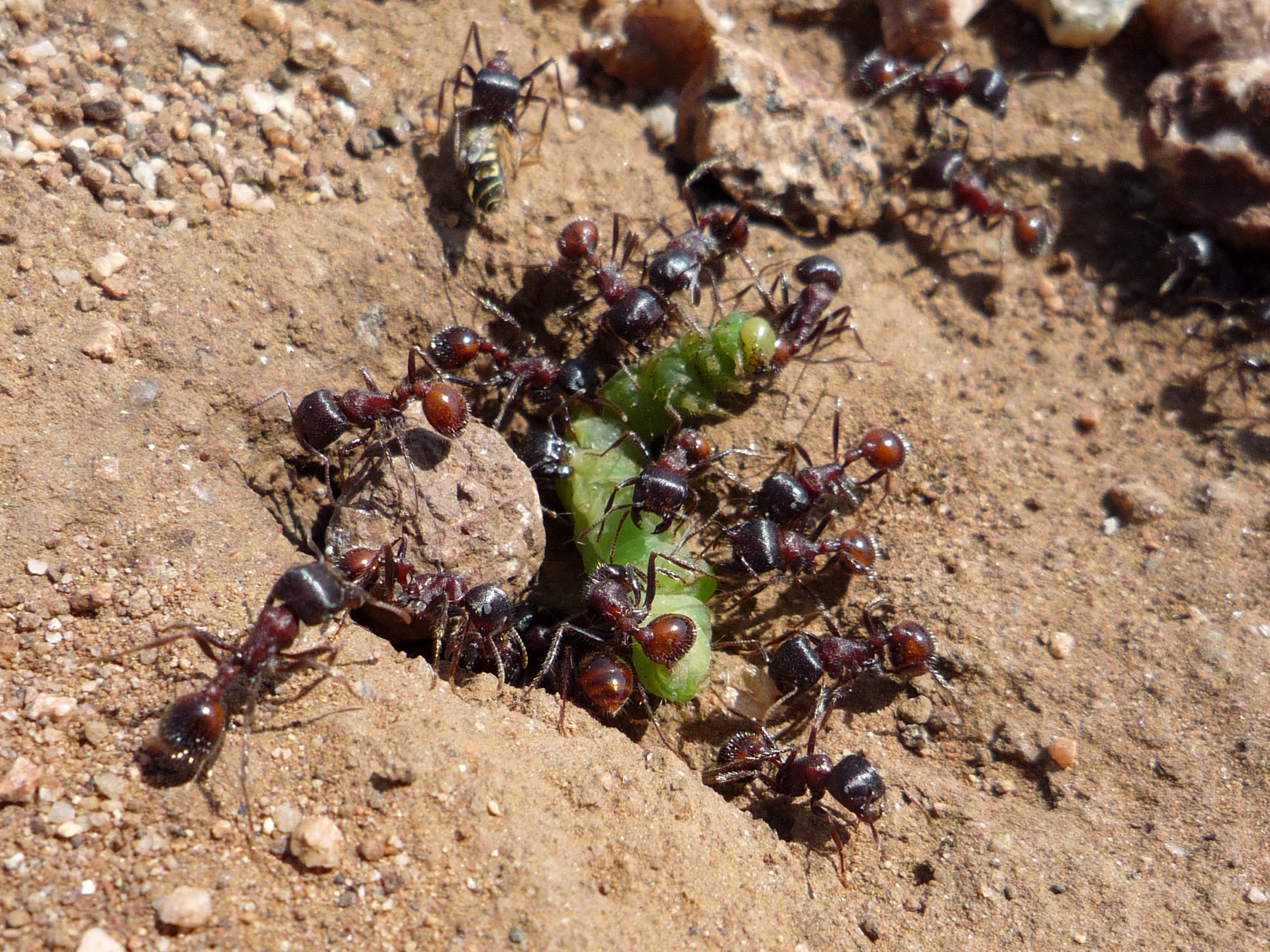
The remarkable world of caterpillar cowbells represents one of nature’s most sophisticated communication systems, where the simple act of tapping against a plant stem has evolved into a complex language that coordinates multi-species alliances and ensures survival in hostile environments. These tiny drummers have mastered the art of acoustic warfare, using their bodies as instruments to summon armies of defenders whenever danger threatens. The intricate relationships between caterpillars, ants, and plants demonstrate the incredible complexity that can emerge from seemingly simple interactions, revealing hidden layers of communication and cooperation that exist all around us.
The continued study of these systems not only advances our understanding of insect behavior and evolution but also provides insights that could revolutionize human technology and conservation strategies. As we face increasing environmental challenges, the lessons learned from caterpillar-ant partnerships remind us that survival often depends on cooperation, communication, and the ability to adapt to changing circumstances. What secrets might we discover if we learned to listen more carefully to the subtle conversations happening in the natural world around us?

